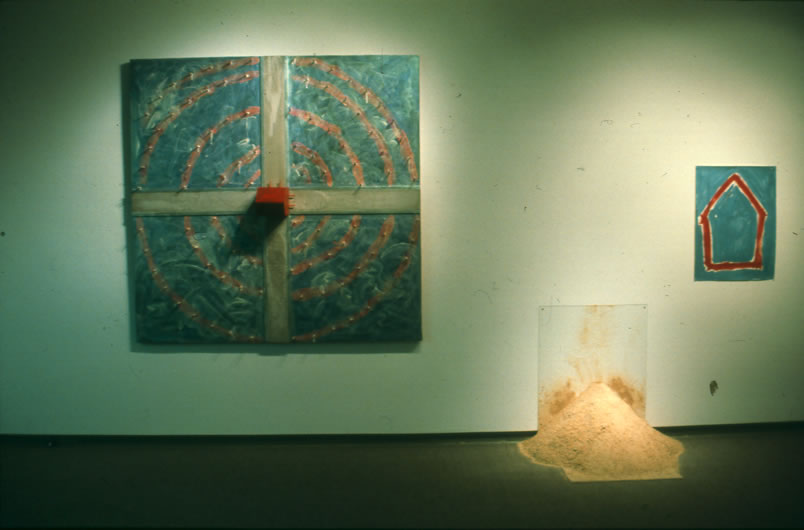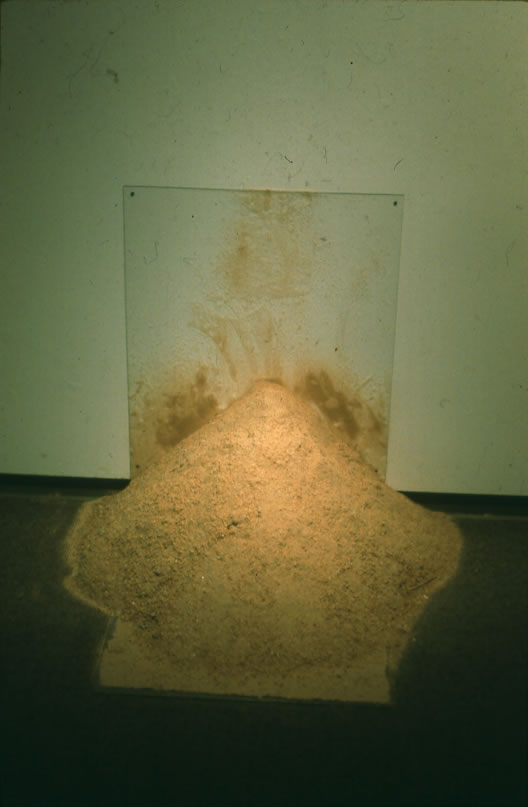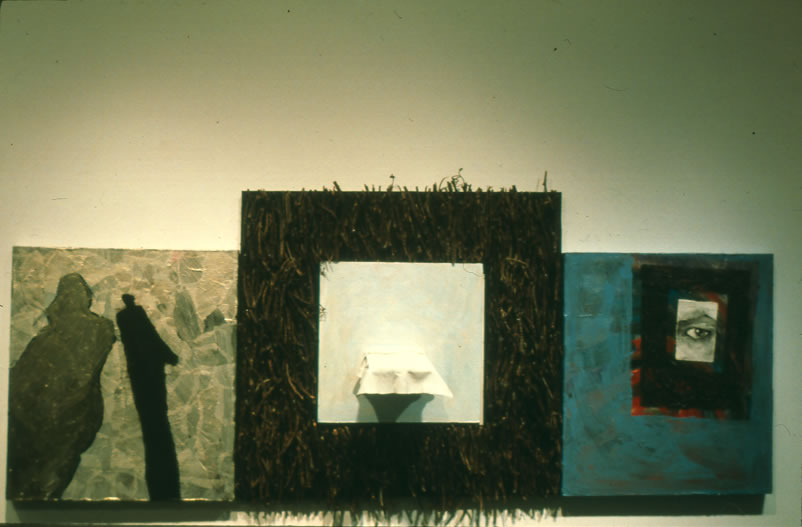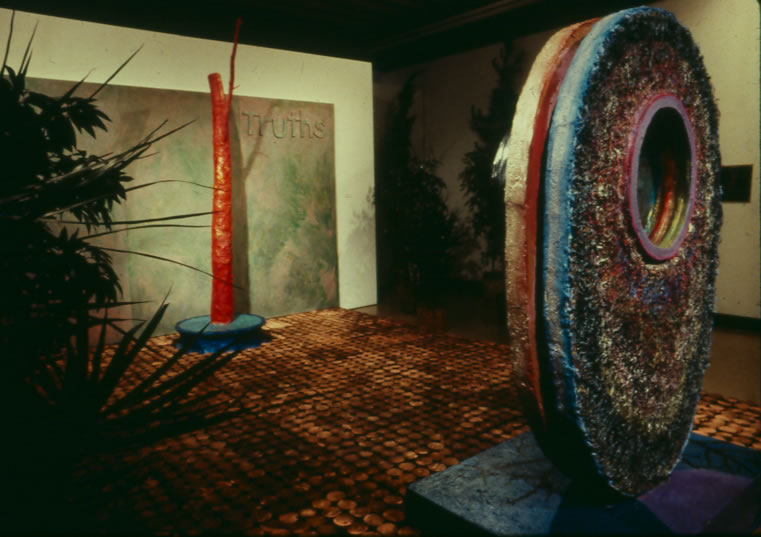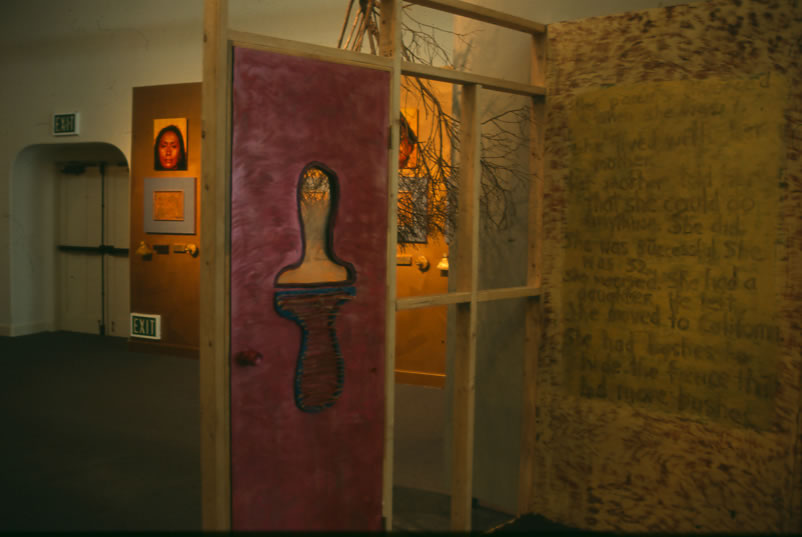Exhibitions
Shaman's Breath
Wignam Gallery/Museum - Chaffey College. Rancho Cucamonga, CA. August 11 - September 21, 2003
"Shaman's Breath ... is the mystery of survival, death, the space between living and dying, joy and no joy or the whisper of slight wind of an elusive understanding of the mystery of being. They put the power of living into reproducing what it was that they wanted to control... not what they wanted to be. Breath... intimation, shadow, suggestions, tinge, trace and whisper.... light makes the figures visible and light changes the paint color and shine. Light also makes visible the invisible and I think about light as a healing thing."
-- Sandra Rowe
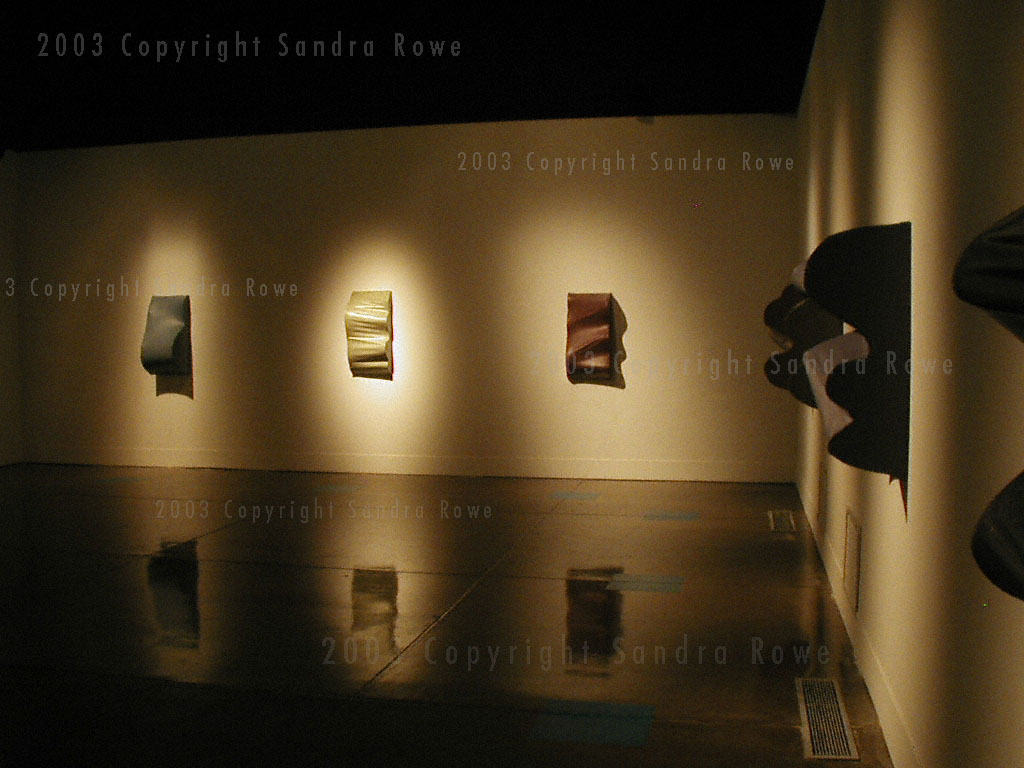

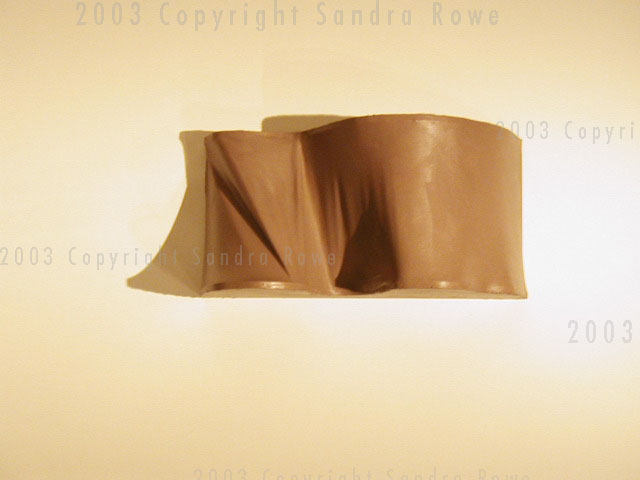
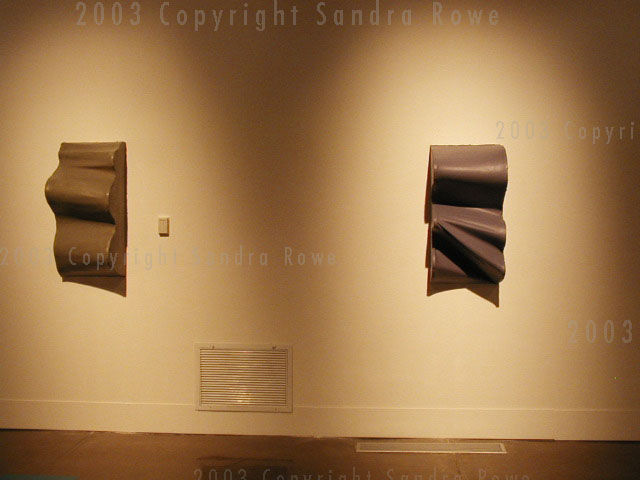
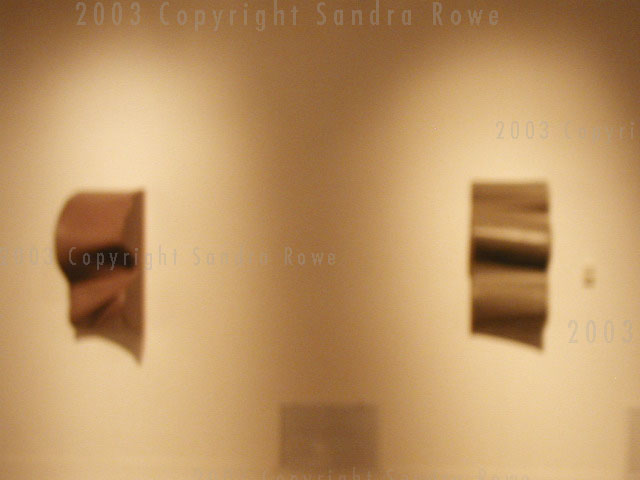
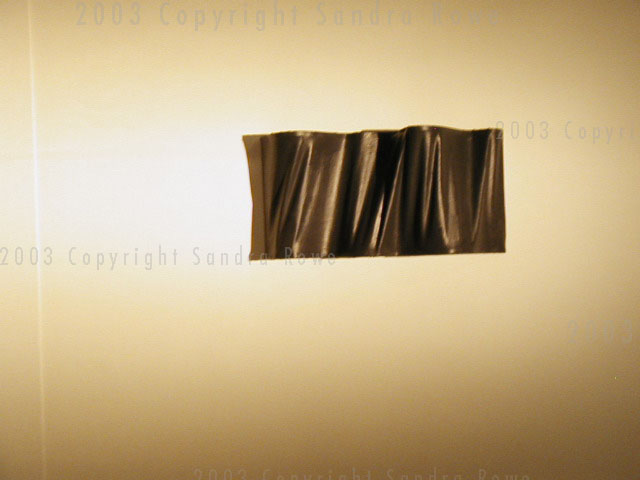
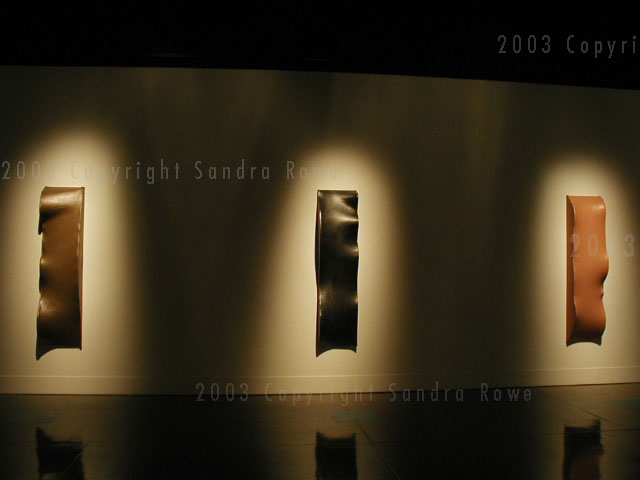


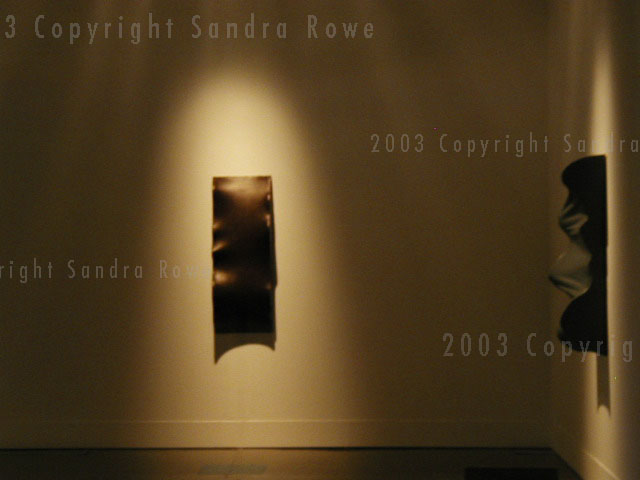
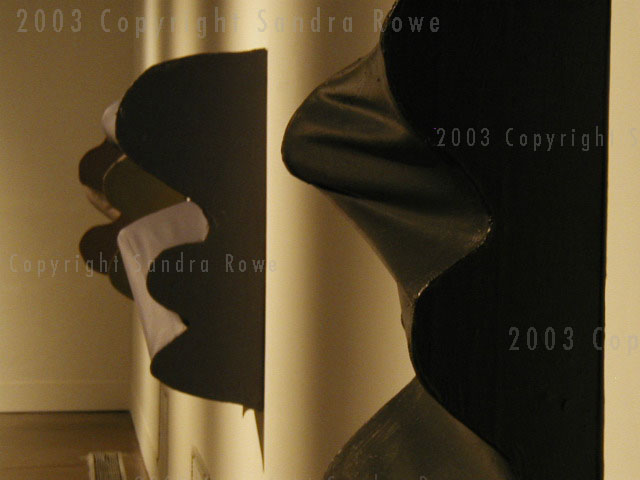
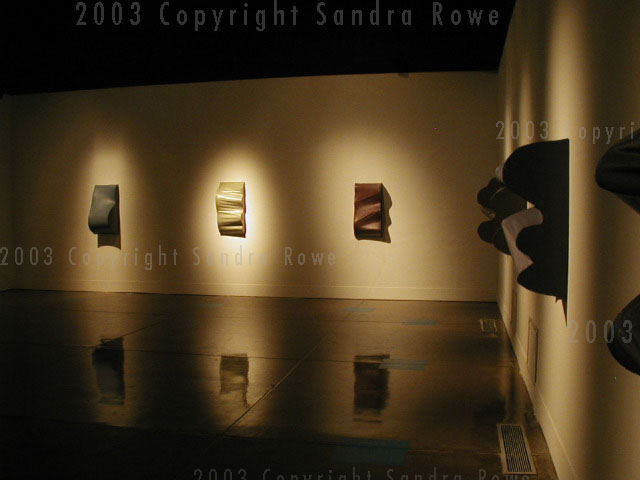
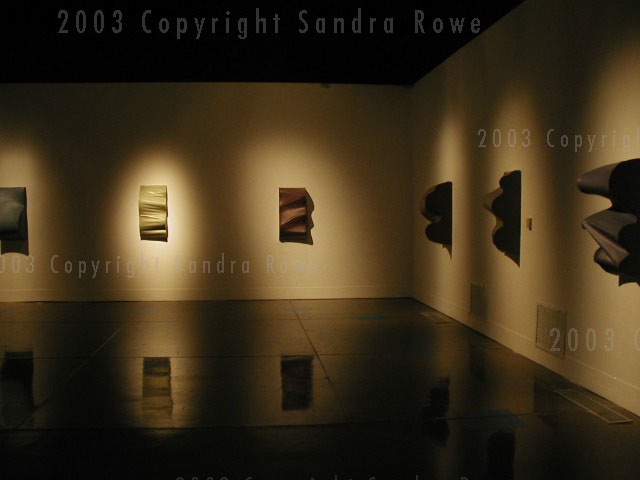

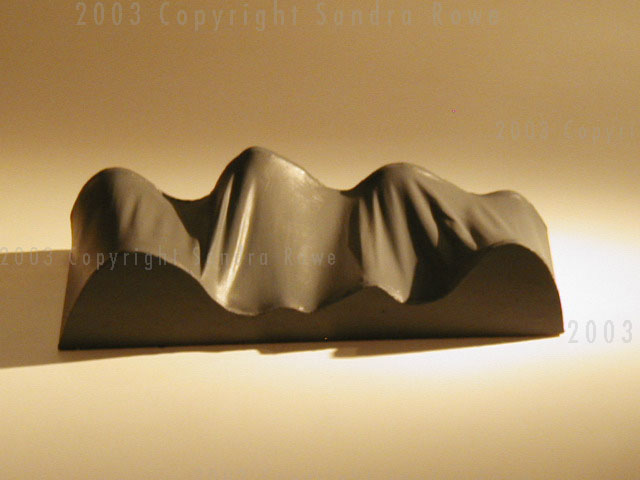
Invisible Woman
For the Santa Monica Museum of Art Rowe executed The Invisible Woman (1993), a large, ambitious installation, which hinted at the quality of a woman's life who has a family and works as an unskilled laborer: Various areas of the installation dealt with the routine and tedium of a short order cook, the long waits for public transportation, and the limitations and even the poetics of the home space. The piece occupied 2,500 square feet, with constructed rooms around the edge, a large green mock lunch counter in the center, as well as ramps, walkways, and red waiting benches. There we large scale photographs, audio, and video components. The piece constructed the life of an unknown woman simply through the spaces she occupied. The woman was never shown except once, obliquely. One had the feeling that her life was so fleeting, that she was here and then gone, and that one's own life can be filled by unconscious encounters with countless "invisible" people.
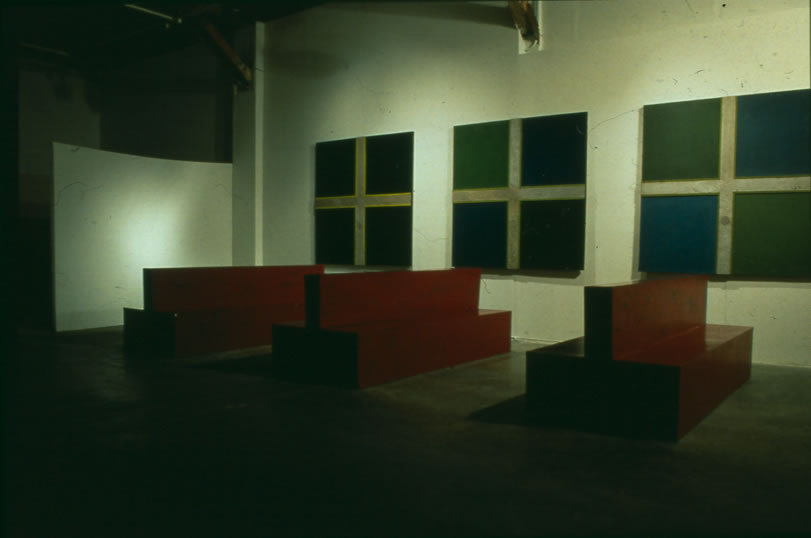
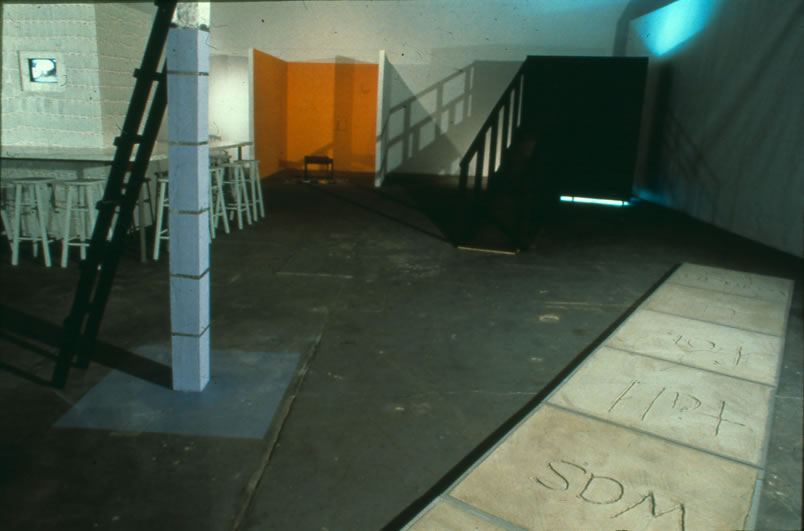

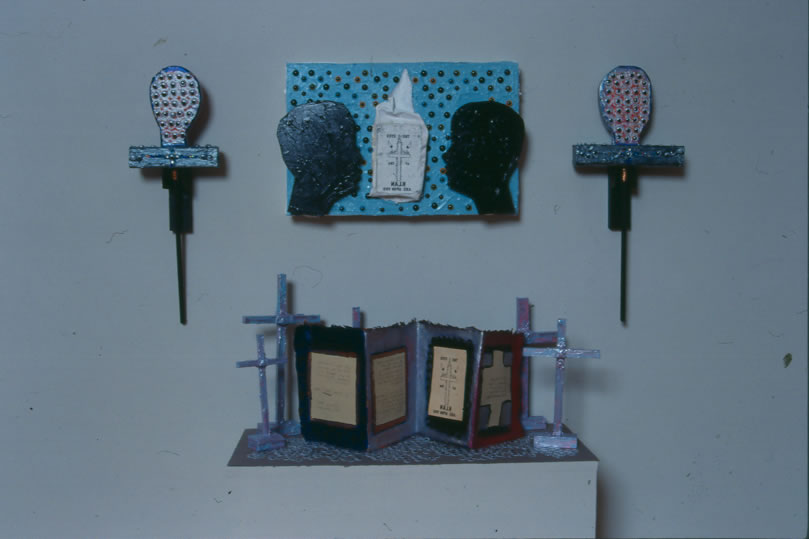
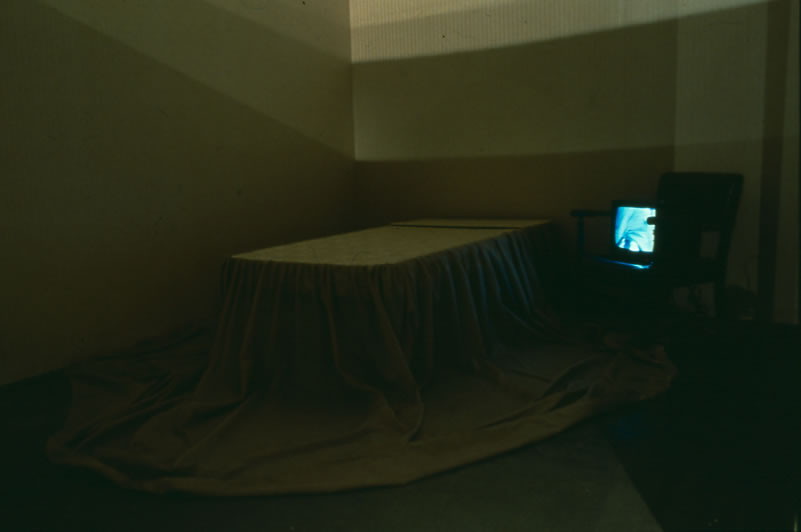
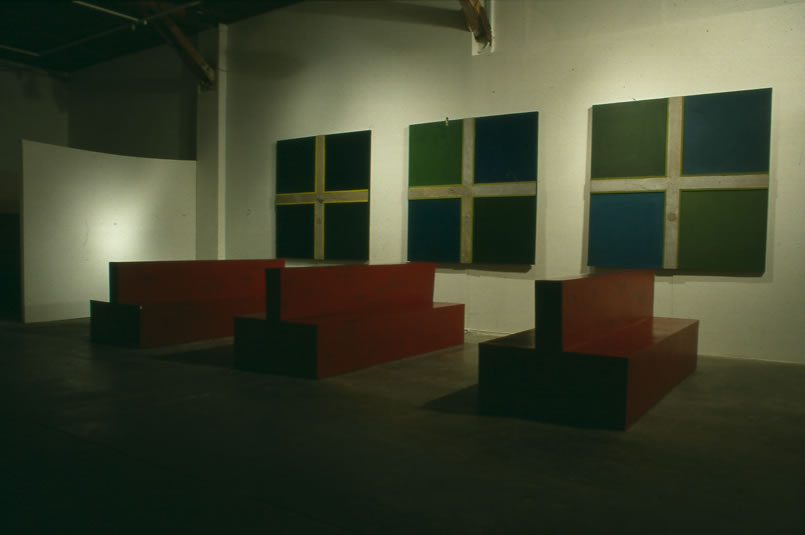
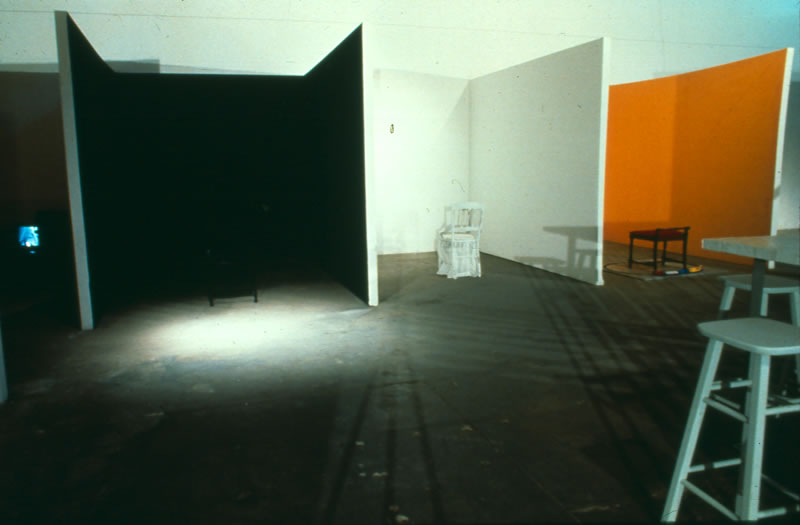
Legacy of a Survivor
The installation for the California Afro-American Museum is titled Legacy of a Survivor. The concept is based on the importance of knowing and understanding one's own history in relationship to whatever is happening today. I believe that when you give meaning to and understanding to a people's past, one can move forward with idealism and a sprinkling of pessimism to promote a large amount of optimism to foster the encouragement of change in human progress against the institutions of racism, discrimination, sexism and any other "ism".
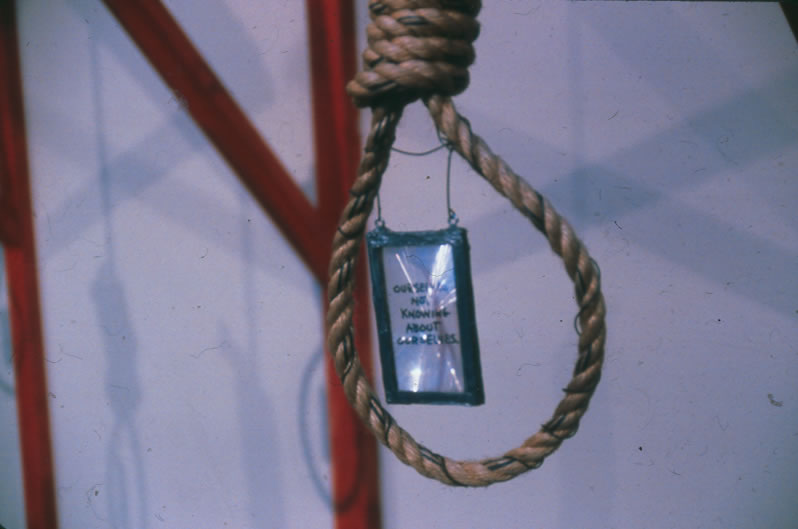
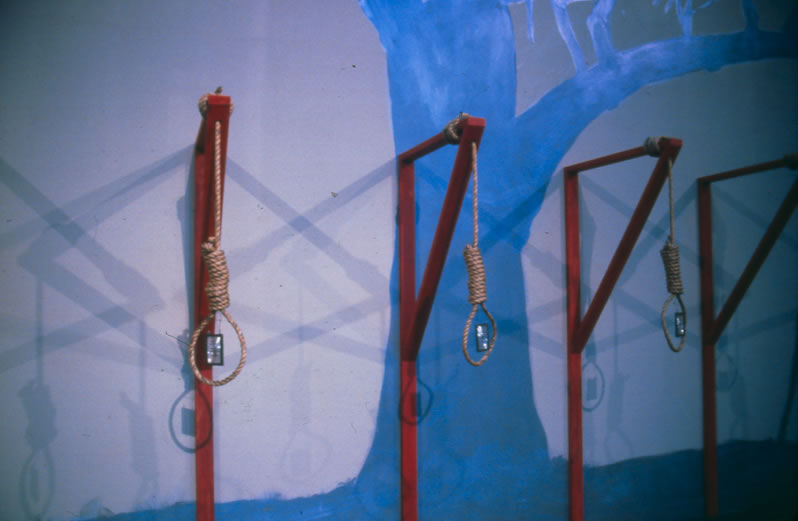
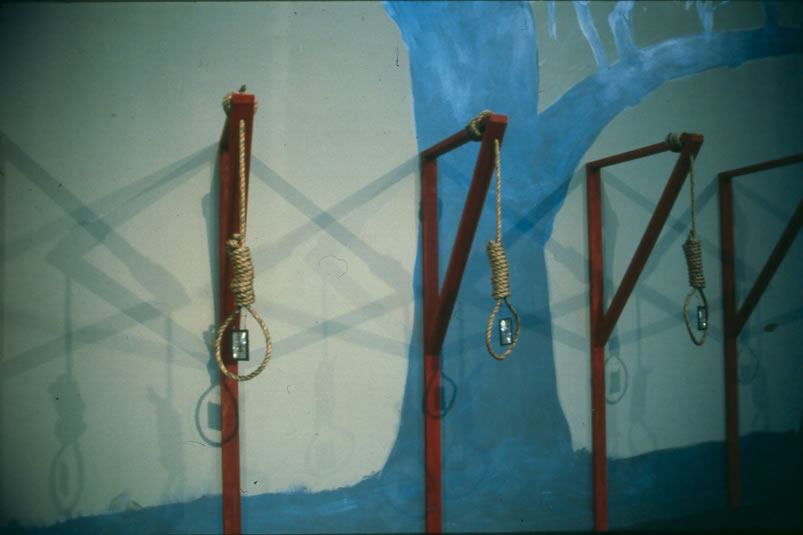
Lies and Truths
Installation
Sometimes it is difficult to tell the difference between a lie and the truth.
Sometimes the person "telling" does not know the difference between the two.
Sometimes the difference between a lie and the truth does not make a difference.
Sometimes the lie is better than the truth.
Sometimes the truth is better than the lie.
Nature does not lie.
We just don't know.
She Lived. She Died.
In She Lived. She Died (1992), an installation at the John Thomas in Santa Monica, Rowe built a one-room shed with a dirt floor. Outside a small dead tree or bush, with a residual root ball, hung upside down. The back of a shed door was covered with shredded money. On opposite sides of the shed were scrawled bits of stories of two women who lived, divorced, and moved to California; one ended up living under the other in a house hidden by bushes. Through a few simple, well-selected elements, the viewer could piece together from the fragments two totally separate, yet sometimes similar lives, and contemplate the differences in the "quality" of the two women's existences.
Slave Series
At Los Angeles Municipal Gallery at Barnsdall Park, an entire wall of glaring gold was the background for a piece entitled The Slave Series ( 1992). In this striking work, the faces of women were photographed and framed low, cutting them just below the chin in a way that suggested a kind of strangulation, or rising water that would surely drown them should they slouch. Below their faces were small objects that spoke of the systemic privileging of some within society, accomplished through economic advantage, contra space, or entrenched political or religious biases. A grid of fragments phrases was placed below the pictures to be read up and down one side. Gradually, stories emerged, though shredded and scattered and history, though it has been repressed, was revealed in this work: The words were designed to arouse anger and supreme sorrow for the hatred. And the lives twisted by systemic oppression. Stories included those slaved women who suffocated their infants to keep them from their own fate. Interwoven with such accounts were the rationalizations and "scientific" theories that those in power often use to justify exploitation.
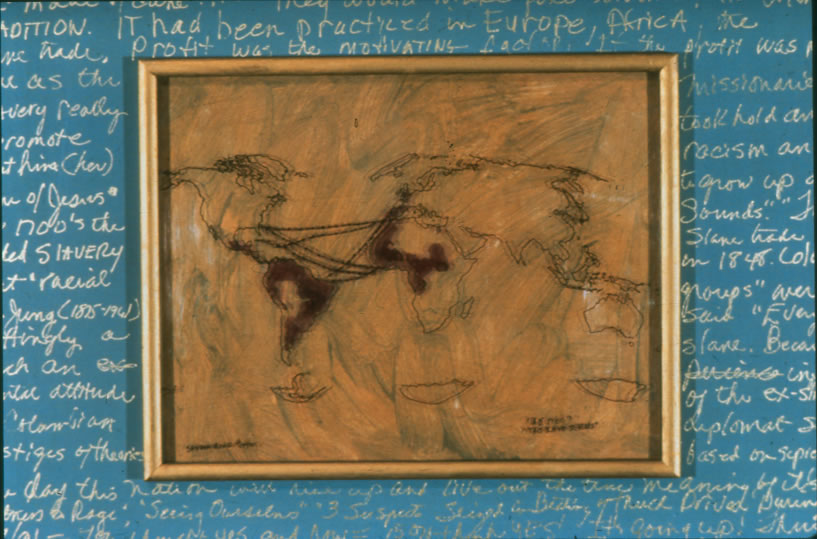
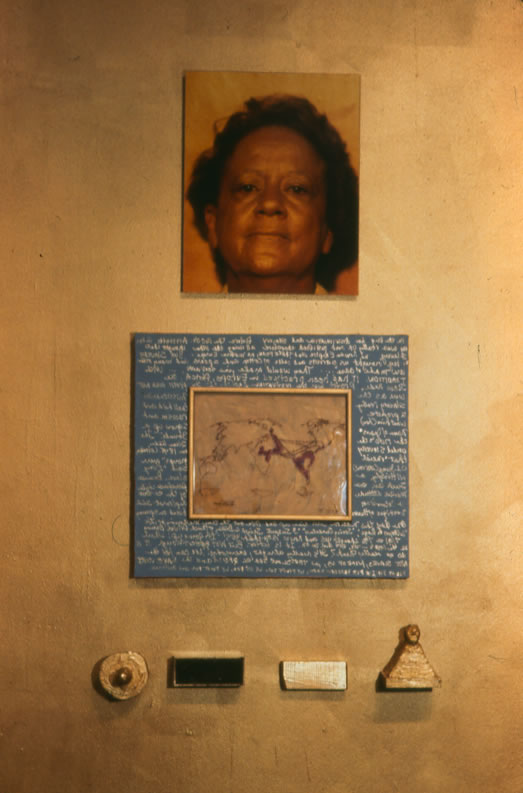

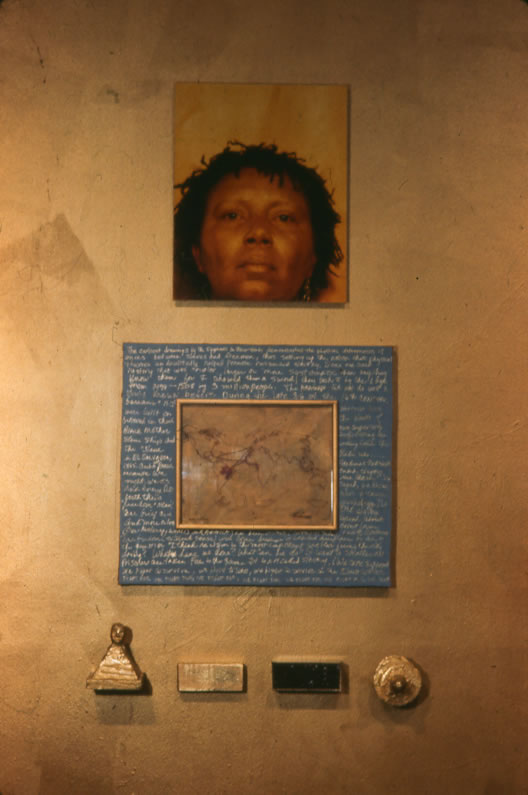
Dreams And Reality
Illuminations
As the Wind Blows
As the Wind Blows, Rowe envisions a grid of pivoting heads with words painted on one side of each. As the wind blows, the heads turn and words appear and disappear at random. Their chance combinations suggest the possibilities of new social orders, some happy and some not. But in the mixing of elements, in the change that inevitably occurs, hope becomes a possibility. The components of As the Wind Blows are based almost entirely on dream imagery. Several of the components of refer specifically to the social ills of racism and sexism, except one almost-empty space that is bathed in light above and below. The light stands for a conviction and faith that, in the end, everything will be alright. There is great hope and comfort in that simple but powerful belief.
